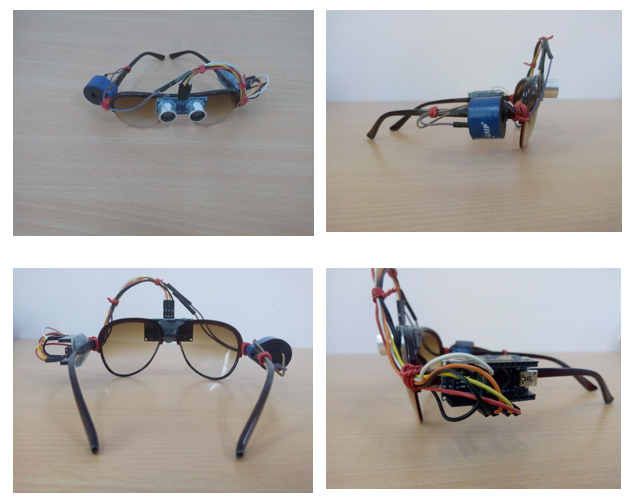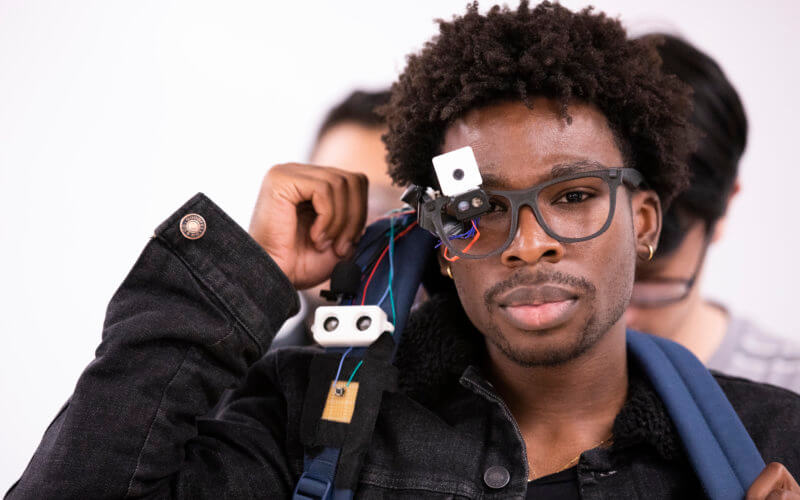Enhancing Ease Of Access With Assistive Technology for the Blind
The assimilation of assistive innovation for the blind represents a pivotal advancement in accessibility, basically changing how people browse their environments and involve with culture. As we explore the varied types of assistive devices and their substantial effects on daily living, it comes to be vital to examine exactly how continuous technical developments are improving the landscape of assistance for the blind community.
Review of Assistive Innovation
Assistive technology describes a variety of tools and software made to enhance the capacities of people with specials needs, including those that are blind or visually impaired. This modern technology plays a critical function in advertising independence and enhancing the quality of life for individuals. By giving alternate approaches for accessing information and doing day-to-day jobs, assistive technology equips individuals to browse their environments better.
The advancement and execution of assistive technology accept a range of principles focused on cultivating ease of access. These concepts consist of user-centered design, which prioritizes the requirements and choices of the person, and the integration of innovation right into day-to-day tasks. Such developments make sure that assistive tools are not just functional but very easy and also intuitive to utilize.
Moreover, assistive modern technology incorporates a diverse range of remedies, from low-tech alternatives like magnifiers to high-tech developments such as screen visitors and Braille screens. The continuous development of this area is driven by the requirement to attend to the one-of-a-kind obstacles encountered by individuals with aesthetic problems (Wearable technology for low vision). As modern technology proceeds to development, the possibility for improving availability and advertising inclusivity stays appealing, eventually contributing to a more fair culture

Sorts Of Assistive Devices
Many kinds of assistive devices are readily available to support individuals that are blind or visually impaired, each created to address particular requirements and obstacles. These tools can be broadly categorized right into 3 major types: low-tech, mid-tech, and modern options.
Low-tech gadgets include things such as magnifiers, Braille tags, and responsive maps. These are reasonably straightforward tools that improve the individual's capacity to interact with their environment without needing complicated modern technology.
Mid-tech devices typically include advanced functions, such as digital magnifiers and portable Braille note-takers. These devices can use capabilities like speech outcome, enabling individuals to gain access to information more efficiently.

Influence on Daily Living
The availability of various assistive devices significantly enhances the lifestyle for people who are blind or visually impaired, influencing their day-to-day living in extensive means. By incorporating innovations such as display visitors, Braille shows, and audio description services right into their regimens, customers get higher autonomy and self-reliance. These tools facilitate accessibility to details, making it possible for people to do daily tasks, such as reading e-mails, browsing public areas, and delighting in media content.
Moreover, assistive tools equip individuals to engage even more completely in click here to find out more social interactions and neighborhood activities. The capability to make use of mobile phones geared up with ease of access features enables smooth communication and link with others. This connection fosters a feeling of belonging and lowers feelings of isolation.
In specialist settings, assistive technology sustains efficiency by allowing people to complete job tasks efficiently. Devices like voice recognition software program and specialized zoom devices more information make it possible for individuals to join the workforce on equal ground with their sighted peers.

Improvements in Innovation
Current technological developments have significantly transformed the landscape of devices readily available for people who are blind or visually impaired. The combination of expert system (AI) and artificial intelligence has actually offered increase to applications that enhance navigation and things acknowledgment. For instance, smartphone applications can currently use AI to identify and define environments in real-time, offering users with beneficial contextual details.
In addition, improvements in haptic technology optometrist surgeon have brought about the advancement of smart walking canes furnished with sensors that identify challenges and provide responsive feedback. This encourages users to browse their atmosphere with raised confidence and independence. Moreover, developments in text-to-speech software program and braille screens have actually improved the access of digital web content, permitting smooth interaction with different media.
Wearable innovations, such as wise glasses, are additionally making strides in aiding visual disability. As innovation proceeds to advance, the possibility for even more transformative tools remains on the horizon.
Future Trends and Innovations
As modern technology quickly progresses, the future of assistive devices for individuals who are blind holds tremendous guarantee. Innovations in fabricated knowledge (AI) and device discovering are poised to revolutionize the means blind individuals interact with their settings. For example, AI-driven applications are being created to boost object recognition, enabling users to determine and navigate their environments with greater simplicity and accuracy.
Moreover, improvements in haptic feedback innovation are making it possible for the development of responsive maps and navigation help that give real-time info via touch. These innovations not only improve wheelchair yet also foster freedom. Additionally, wearable gadgets outfitted with augmented truth (AR) attributes are arising, providing individuals aesthetic information with sound summaries, thereby connecting the space in between the physical and digital worlds.
In addition, the integration of smart home innovation offers brand-new opportunities for ease of access, enabling people to regulate their living environments through voice commands or mobile phone applications. As partnership in between technology programmers and the blind community continues, the emphasis on user-centered design will guarantee that future advancements are customized to fulfill the one-of-a-kind needs of this population (Wearable technology for low vision). The trajectory of assistive technology assures an extra inclusive and empowering future for people who are blind
Verdict
In final thought, assistive innovation plays an essential role in boosting availability for individuals with aesthetic problems. Constant advancements in modern technology and user-centered style ensure that these devices cater properly to the distinct demands of the blind neighborhood.
The assimilation of assistive innovation for the blind represents a crucial improvement in accessibility, basically changing just how individuals browse their atmospheres and involve with society.Assistive technology refers to a variety of gadgets and software developed to boost the capacities of individuals with handicaps, including those that are blind or visually damaged. Wearable technology for low vision.As technology quickly proceeds, the future of assistive tools for individuals who are blind holds enormous promise. The trajectory of assistive innovation promises an extra empowering and inclusive future for people that are blind
In final thought, assistive modern technology plays an essential duty in enhancing availability for people with visual disabilities.